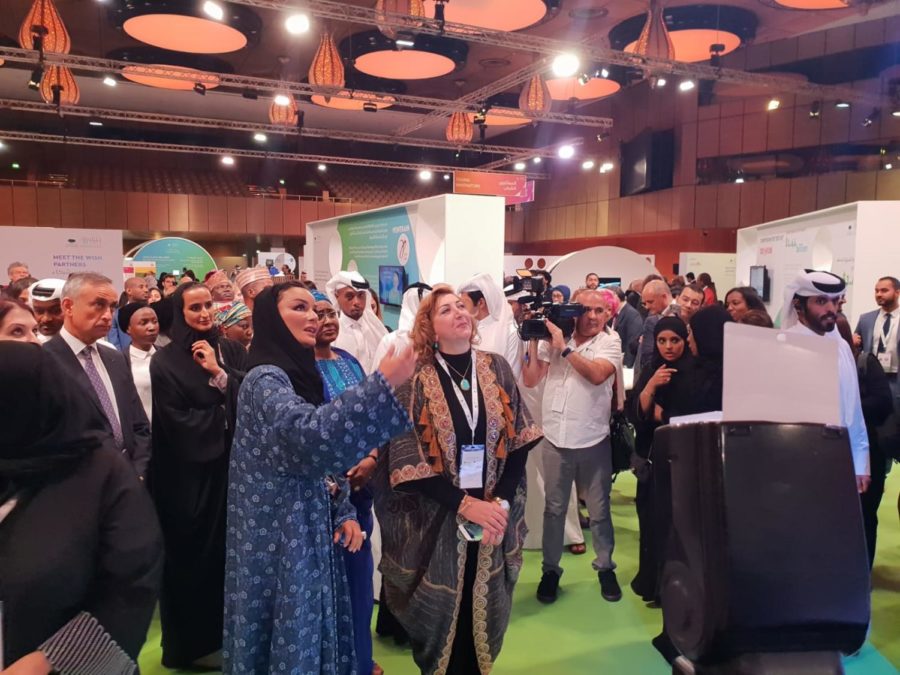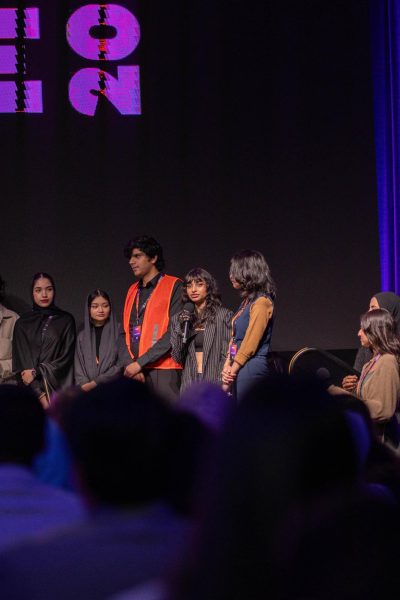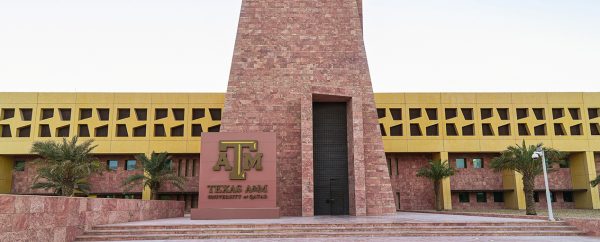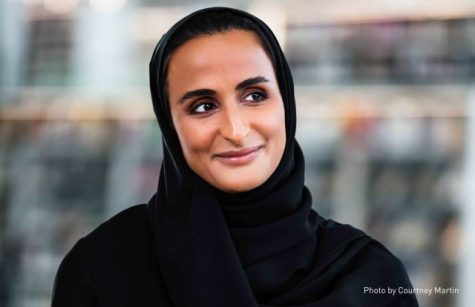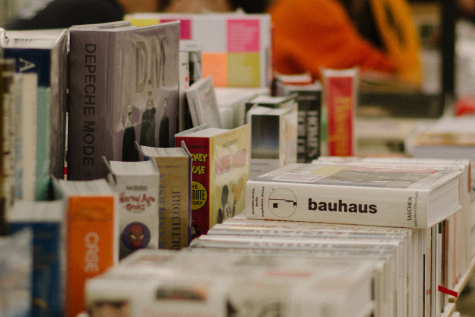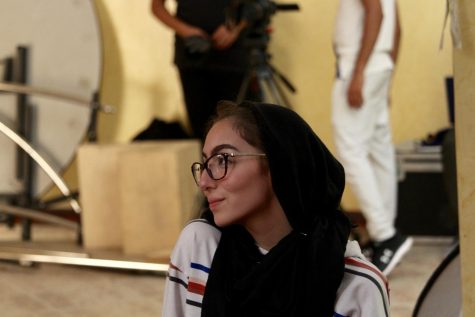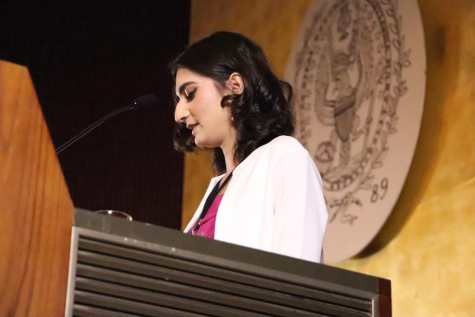“Strings of Time” featured at 2018 WISH Summit
Abbo Al Numan presented her sculpture to Sheikha Moza bint Nasser and Sheikha Hind Al-Thani at the WISH Summit. Photo provided by Shetha Faraj Abbo Al Numan.
Academic and Iraqi artist Shetha Faraj Abbo Al Numan uses her art to represent life and relate it to the field of education. “Art was something by default in my family,” said Al Numan, who is also the daughter of prominent Iraqi artist Faraj Abbo Al Numan.
Al Numan now works as a guest service manager at Al-Ahli Hospital as she believes that guest care is an art form itself.
“Artists have delicate personality and charismatic character, they have empathy towards others and feel human agony and happiness in a sensitive manner, which is not available in other pragmatic characters of people. This helps with hospitality and guest services as it adds class and style to the care they provide,” she said.
Her sculpture “Strings of Time” won the World Innovation Summit for Health art competition, which meant her winning sculpture was featured at this year’s summit hosted at the Qatar National Convention Centre’s Innovation Hub in November.
The competition was announced in July 2018 and centered on the theme of health and sustainability and the relationship between earth and mankind.
Al Numan said she first learned about the competition via a pamphlet produced by the “International Artists in Doha.” She realized it was her chance to be creative. “I combined sculpture with mechanism. For me, art is the real interpretation of a muse. The idea came to me immediately once I read the pamphlet.”
Her winning sculpture was inspired by her industrial design background, where Al Numan combined mechanics and art. “My statue is not a regular statue…it’s a clock. So it’s made of two pieces, one piece on the floor which is a big globe, 2 ½ meters’ diameter, it runs clockwise,” she said.
“When I won the first prize I was so shocked, I couldn’t sleep for a day. I thought, well, it’s time for industrial design to find its place in Doha,” said Al Numan.
The three-meter sculpture has four chains of DNA going into the cavity of the globe and they rotate anti-clockwise. As the globe rotates, a recording of a woman announces the current time in Doha per hour in order to depict Mother Earth.

“In design, you need to create movement that adds excitement to the visual perception of the spectator. So, moving the two parts anti-clockwise, it excites the spectator,” she said.
According to Al Numan, the strings also depict the human race, with the DNA’s cells made up of human arms with different skin tones and lengths that represent diversity within the human race. The variation in each arm’s length symbolize the generations on planet earth.

“Strings of Time” shows the relationship between earth and the human race. “The hands holding on the rope is how we cling to life,” said Al Numan. Each string has a different length as a way to represent the variation in social classes and the way every human being contributes to Mother Earth.
During the process of creating the sculpture, she faced the challenge of not having a studio to create her art, unlike in her old house in Baghdad. However, she overcame this challenge by executing the design on her computer. According to Al Numan, being a woman artist continues to be another challenge.

Throughout her journey as an industrial design student at the University of Baghdad and during her career as an artist, Al Numan said she witnessed male artists getting more recognition.
She said she remembers feeling that her mentor in university underestimated her skills as an industrial designer. But Al Numan was the only woman out of her batch to receive two patents, one after inventing a traffic light which used optical fibers that changed all colors instead of having three separate lights, and another light unit used in homes.
Al Numan used her success to prove to her male mentor that women can also be in the field of industrial design. She always used this challenge as a source of motivation as well as her passion for art.
“I’m used to creating stuff and working on ideas and watching them grow and become true…I believe this is the passion in my life” she said.
This challenge continues to be part of her career, as she still believes that men artists get more recognition than women.
“[Men’s art] are there the minute you go in…but I don’t mind because my art piece is also quite exciting for the spectator and whenever I display my art people stand there. So, I feel sad when I see that, but I think it’s a masculine world,” she said.
However, Al Numan said she received support from her fellow male artists who congratulated her on her award. “It came to my surprise and I was totally off guard when they called to congratulate me, I guess they realized that women can achieve equally to men,” said Al Numan.



